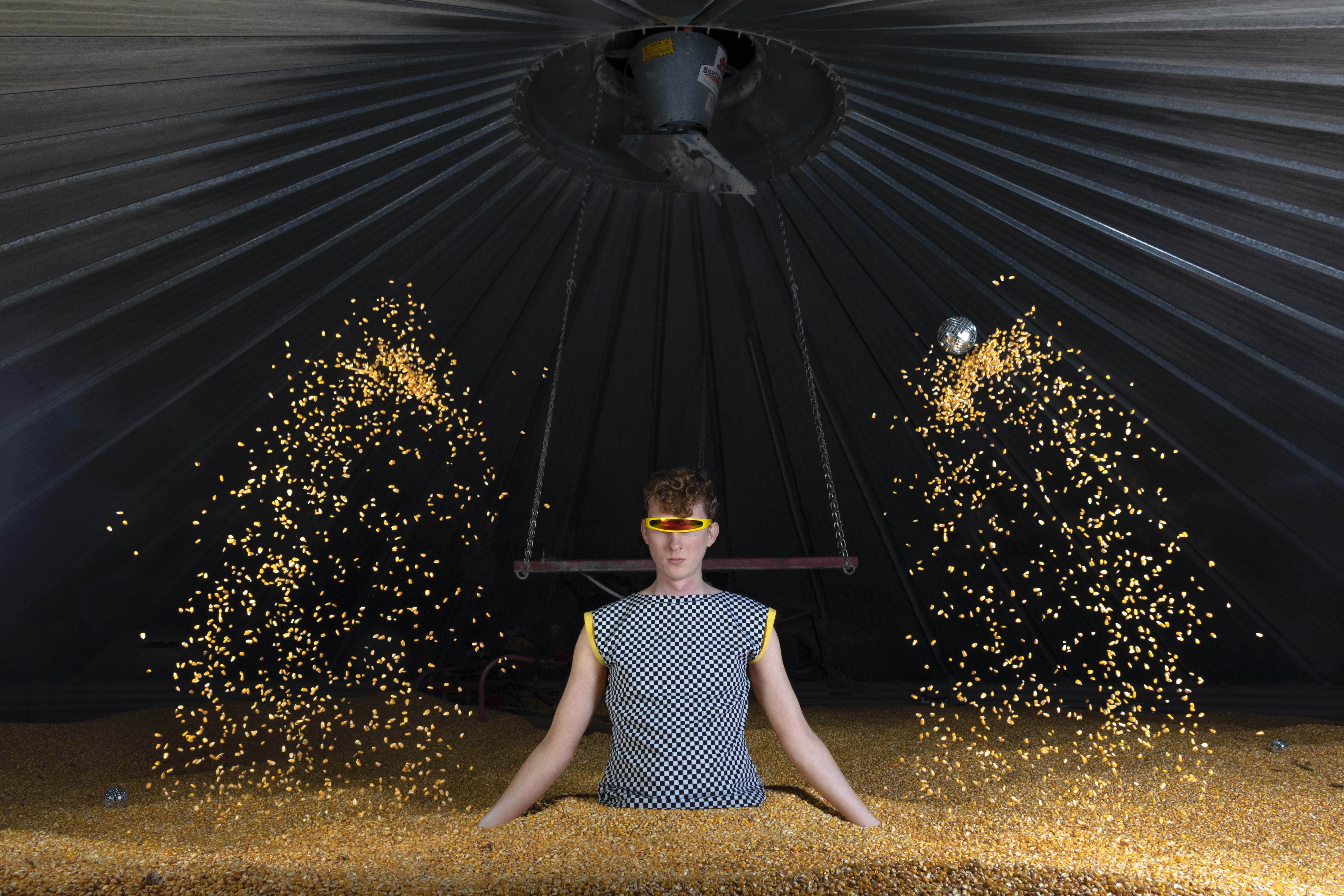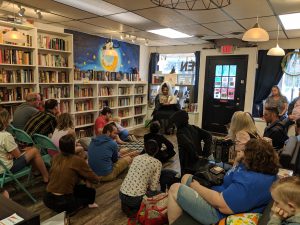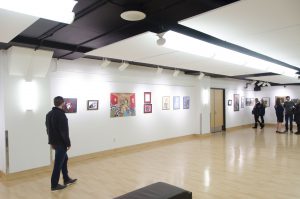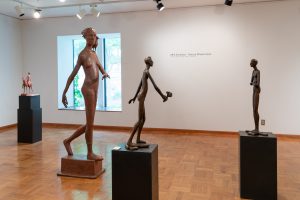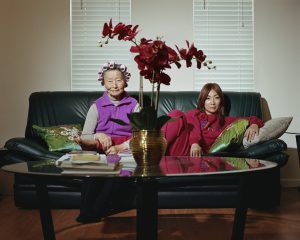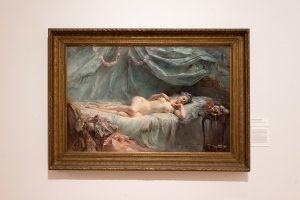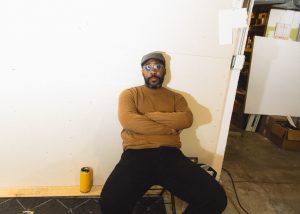Nadia Stiegman is an artist living and working in the rural midwest. Their photography explores rural queer identity, but in a light not often seen. Tired of the same narratives of rural queerness, such as packing up and moving to the big city to escape the rural environment, Nadia instead paints a picture of the rural queer identity through a positive lens. Their work is deeply connected to farmlife, an environment where they grew up, yet at the same time it’s futuristic, queer, and so much more. Nadia refers to themselves as “a rural, queer, cyborg who grew up on my family’s grain farm in Illinois.” The farm Nadia is referring to is all open spaces surrounded either by corn or bean fields. Her farm sits on a dead end, which is a mile away from her town of Thawville, with a population of only 150 people. She tells Midwesterners who don’t know where that is, “it’s about 45 minutes north of Champaign and 45 south of Kankakee.”
Nadia is a recent graduate from Illinois State University in Normal, IL with a BFA in Photography and a BA in Arts Tech. While in school, they participated in various art shows, student organizations, and worked as a gallery assistant at Jan Brandt Gallery. They moved back home to 1350 (the address where she grew up) at the end of this past summer and is currently taking care of her cats, building her website and online store, exploring their identity, and hunting for a job. I have had the pleasure of being friends with Nadia for a while now, and after their recent exhibition at Jan Brandt Gallery in Bloomington, Illinois, I wanted to ask them some questions about their work, and more specifically, their newest series FARM 1350.

Alexander Martin: Can you tell me a bit about your work and what you like to do with your photography?
Nadia Stiegman: I am a surreal / sci-fi photographer who shoots directorial narratives and still lives that I typically have pre-visualized beforehand. I like to collage and combine iconic everyday items [present] in my life into my photography. Seeing an everyday object or environment in a fantastic, new way not only amazes people, but it also helps them associate that object with a new alternate world that they create. This process helps me untether these objects from my logical consciousness and imagine them in a world totally free of the social and physical constraints we create.
I really love to daydream. Most of my ideas begin by thinking of a concept, going about my life while it sits in my subconscious, and then letting the idea naturally manifest itself. Sometimes a shot begins with me intuitively just being attracted to a location, props, a color palette, etc., that I see. I then combine them with composition and color schemes situated in my head. To be honest, I really love fashion, technology, and Nintendo video games, so I think those play into the way I think now.

AM: What influences your work right now?
NS: The rural environment I live in has been my biggest inspiration lately. I really just love taking breaks to walk outside on the farm and intently observe everything around me. It clears my mind and I’ve done it since I was a child. I really like the work of Southern Fried Queer Pride, as they do an excellent job of promoting rural queer artists, and a trans artist photographer from New York, Martine Gutierrez. Lately, I have been doing work with the Transamorous Network specifically focusing on positive thinking and it’s had such a big influence on my relationship with my art and myself. I also really like looking at the work and concepts club kids do. I appreciate the artistry and performance element that goes into creating a drag/fictional character with makeup and fashion. My primary research has been on queer people in rural areas, though. The books I’ve read on that are Another Country: Queer Anti-Urbanism, Studies In Urbanormativity: Rural Community In Urban Society, and Another Country: Queer Anti-urbanism.

AM: Let’s talk about your current body of work, which I love so much, FARM 1350. What is this series about?
NS: Well, the number 1350 is part of the address of my family farm. To quote the first sentence of my statement is a good place to start: “FARM 1350 is a story birthed from the imagination and resilience of a rural trans cyborg.” A Cyborg Manifesto by Donna Haraway defines a ‘cyborg’ as “…a cybernetic organism, a hybrid of machine and organism.” I link transgender, which is based in both social and scientific fact, with ‘cyborg’, a term of science fiction, as modern medicine now allows people to transform their bodies in amazing ways once thought [to be] limited to only science fiction. I grew up playing video games, watching TV, and experiencing culture through the filter of technology. I take hormones and am planning to have more procedures for my transition. Technology and medicine have totally changed what’s considered “natural” now, so in those ways, I consider myself a cyborg. My father can operate tractors with a satellite controlled auto steer and monitor our farm’s security with cameras. He’s got a metal rod in his leg from a broken hip and he wears a hearing aid, so in many ways he’s like a cyborg too. These elements really connect my father and I together, which is why they are included in some of the photos (if you look close enough).
Combining my surreal directorial photography style on my family farm was such a stark contrast from my previous work and it felt so authentic because it’s just such a positive story. [FARM 1350] is essentially about aligning my outer world with my inner expression. That expression is a result of my positive relationship with family, rural areas, farming, gender, fashion, my millennial upbringing, America, queerness, technology, and a love of fantasy. In this world, all these beings know are positive associations with the concepts I’ve mentioned [that have] influenced me the most. This alternate reality takes place at Farm 1350, a location that is occupied by a family unit of cyborgs. I want the viewers to create their own story.
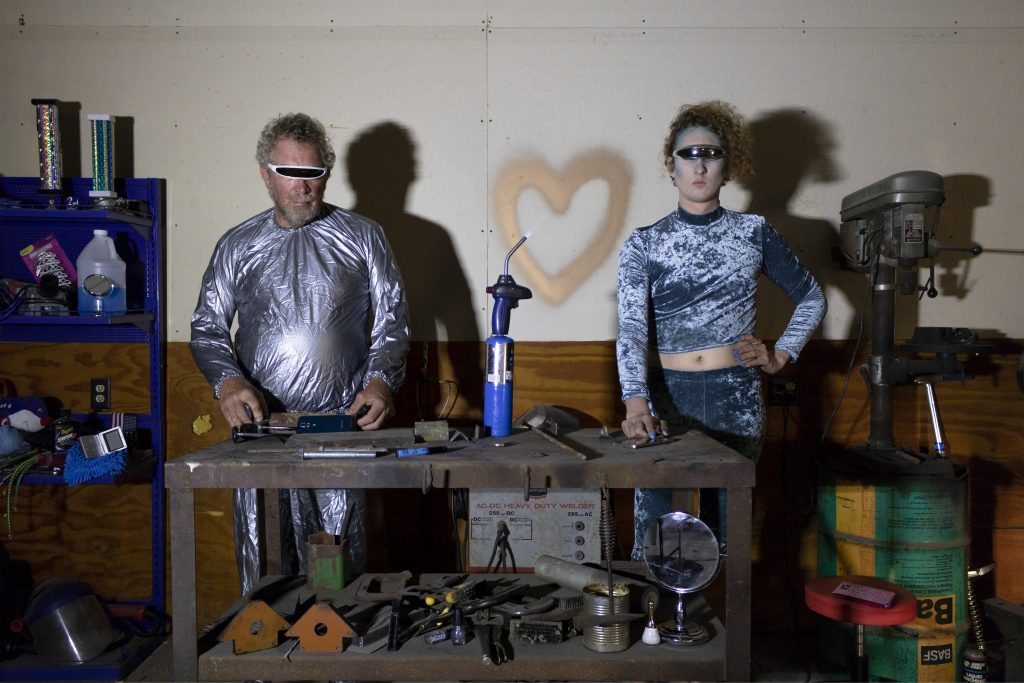
AM: We have talked in the past about this work a lot and you have always brought up the fact that you want to create a positive rural trans and queer narrative. That is not something that is often done, and I believe that is one of the biggest draws of this series. Can you expand upon that?
NS: Yes, so something I feel really influenced me were a few books I read on rural queer studies, specifically Queering the Countryside. In this book, each chapter was focused on a different Western rural queer experience from lumberjacks out in the forest to lesbians in rural Canada. Most every queer person in this book mentioned the different value systems of urban and rural communities and their preference for quiet, outdoor life over bustling cities. These people all strove for connection to a queer community and their stories of resourceful resilience reminded me of my own life. Since some of them lived in communities that had no problem with their identity, I thought, “Why can’t that be me?” [Although] these books mostly just focused on the most widely documented stories, which were of cisgender-white LGB people, I still felt more connected to LGBTQ+ history than I ever had before.
What I took from this research was that it doesn’t just take a city to build an accepting community. I loved my life story, and I need to encourage other rural people like me! I had finally gained the verbal tools to be able to describe the work I had been making–it felt liberating. In the photos I’d been shooting, I realized that I had already been exploring the intersection of my rural and trans identity by specifically focusing on every positive aspect of my rural upbringing. I showed some of the photos I took to my friends and my parents, and they were all amazed by the sci-fi elements. The suspension of disbelief connected with everyone, even my parents, so that became the focus.
I want to continue this series and evolve a world where transgender people belong in rural spaces just as much as everyone else. In my world, it does. I don’t really see any positive rural queer or trans stories discussed in popular culture at all, so I really want to begin that conversation. I know I certainly can’t be the only one, because I know you are. (Haha.)

AM: Can you talk a little bit about your home and personal connections to rural America?
NS: I’ve lived on my family’s grain farm in Illinois my entire life until age 19 when I went to college. When I wasn’t outside assisting my parents or playing with animals, I was playing Nintendo games in the house, so I’d say that also contributed to my love of fantasy and technology. I grew up going to small community events on each small town’s main street, such as the county fair, church, car shows, and bullfrog hunting. I also went camping with my parents. The high school I went to was quite small as there were only 60 kids in my class and 300 in the school total. I did art, sang in the choir, and even competed at the national level shooting precision air rifles with my school rifle team. Deer and pheasant hunting was quite a popular sport in my area. I never took part in that, but I did shoot a few small birds here and there and stationary targets. Small towns in Midwest America are heavily agriculture dependent and are mostly populated with Caucasian people and some Hispanic. These small towns were full of farmers, botanists, Christian churches, accountants, and small businesses.
Cities in urban America often have certain stereotypes of the rural people and the same goes for rural folks towards city people. Much of this is just a lack of understanding of the different needs and values of people depending on their environment. Something that Queering the Countryside mentioned is that urban areas often value being cultured, individuality, and the industrial production of goods. Rural areas usually value family, sameness in identity, and practical skills over cultural knowledge. The America I’m from values the latter. Keeping this in mind when speaking with my parents has really helped me understand their perspective and is why we work so well together.

If you want to see more of Nadia’s work and learn more about them, check out their website at https://stiegman.myportfolio.com/
Featured image: Vacuum, 2019 by Nadia Stiegman. A cyborg in checkered cloth is shown in the interior of a silo with golden bits of corn suspended in the air. Image courtesy of the artist.

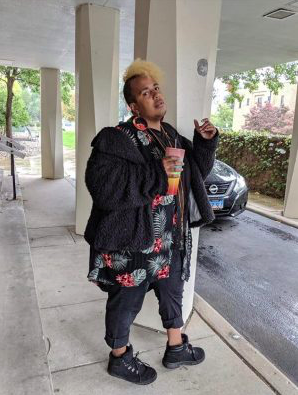
Alexander Martin is an artist living and working in Peoria, IL. Co-Founder of Project 1612, an , an independent art space and short-term residency program. They make work dealing with the intersection of thier queer and black identities. Follow them on Instagram: @xander9210 or Project 1612 @Project1612
